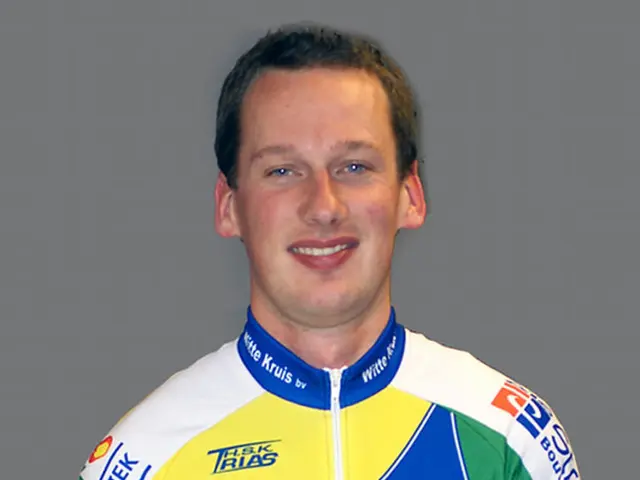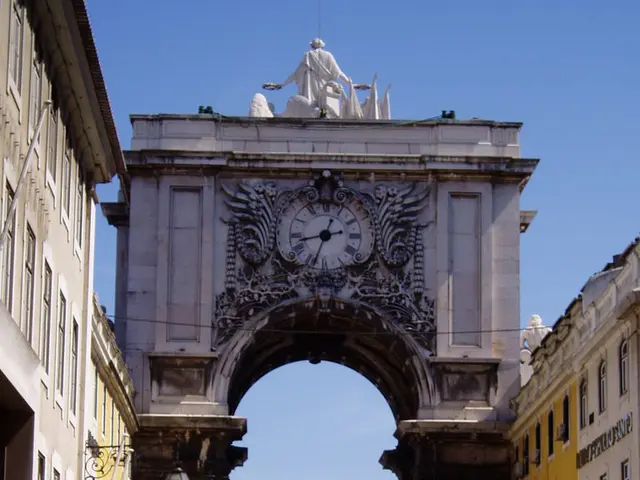Commemorating the Conclusion of Conflict: Urban Areas Preserve Remnants of Final Battle
In the heart of Germany, Baden-Württemberg offers a rich tapestry of educational exhibitions and remembrance events dedicated to the end of World War II. The region, particularly Stuttgart and its surrounding areas, is home to a variety of museums, memorial sites, and historical sites that provide a profound understanding of the war's impact.
On May 8th, Stuttgart will host a symbolic concert at the Philharmonic, with choirs from Warsaw and Strasbourg participating. This event signifies reconciliation, a testament to the healing process that has taken place since the end of the war.
One of the key sites in Stuttgart is the Hotel Silber Museum & Memorial Site, which focuses on Nazi-era history and persecution. Another significant memorial is Gedenkstätte Nordbahnhof, a former train station used for the deportation of Jews, Sinti, and Roma. The memorial preserves original tracks and provides informative panels about the victims and Nazi crimes.
Stuttgart's Museum für Stuttgart (StadtPalais) and the Haus der Geschichte Baden-Württemberg offer historical context, including WWII, with exhibits that connect the local and regional history to national events. The Landesmuseum Württemberg also provides a comprehensive overview of the region's history.
Remembrance events are not limited to specific anniversary dates. Gedenkstätte Nordbahnhof frequently serves as a focal point for ceremonies and educational events, and Stuttgart hosts exhibitions and public commemorations at these historic sites throughout the year.
In Freiburg, the Documentation Centre National Socialism was opened to remember Nazi crimes in the city. The museum in Freiburg collects biographies and photos of victims and makes them available via an app. The city's mayor will also travel to Besançon for a celebration on the 8th of May.
Other cities in Baden-Württemberg also have their own unique ways of remembering the war. Heilbronn holds its central memorial service on a date significant to the city's liberation from the war. Pforzheim focuses on the local event, the destruction of February 23rd, among milestones towards the end of the war.
In Mannheim, the city archive Marchivum has a website dedicated to memorial events. The city archive in Ulm is cooperating with the memorial site Oberer Kuhberg, a former concentration camp. An exhibition titled "Against Forgetting" by Luigi Toscano is taking place in the literal center of Mannheim.
Friedrichshafen is dealing with life in the city on Lake Constance before, during, and after the war, as well as education under the swastika in the school museum. The memorial site Oberer Kuhberg has launched a social media campaign with facts about the war and post-war events in the city. A winter linden tree in Friedrichshafen will become a peace tree, symbolically dedicating an old tree with deep roots.
On March 27 and April 30, 1945, with the entry of French and American troops, the people in Wuerttemberg, Baden, and Hohenzollern had survived the catastrophe of the war. Friedrichshafen will have a memorial service with the French general consul and representatives of the Franco-German Brigade.
As we remember the end of World War II, it's important to acknowledge the strides made towards reconciliation and unity. Mannheim's Mayor Christian Specht (CDU) stated that the European unification is an invaluable achievement after the civilizational breakdown of World War II. The cities of Baden-Württemberg continue to honour the past while looking towards a future of peace and unity.
[1] Source 1 [2] Source 2 [3] Source 3
The following general-news sources provide insight into the remembrance and educational events taking place in Baden-Württemberg, focusing on politics related to World War II: [1] Source 1, [3] Source 3. For instance, Stuttgart will host a symbolic concert on May 8th, signifying reconciliation (Source 1). Similarly, Freiburg's Documentation Centre National Socialism remembers Nazi crimes in the city and collects biographies of victims (Source 3).








